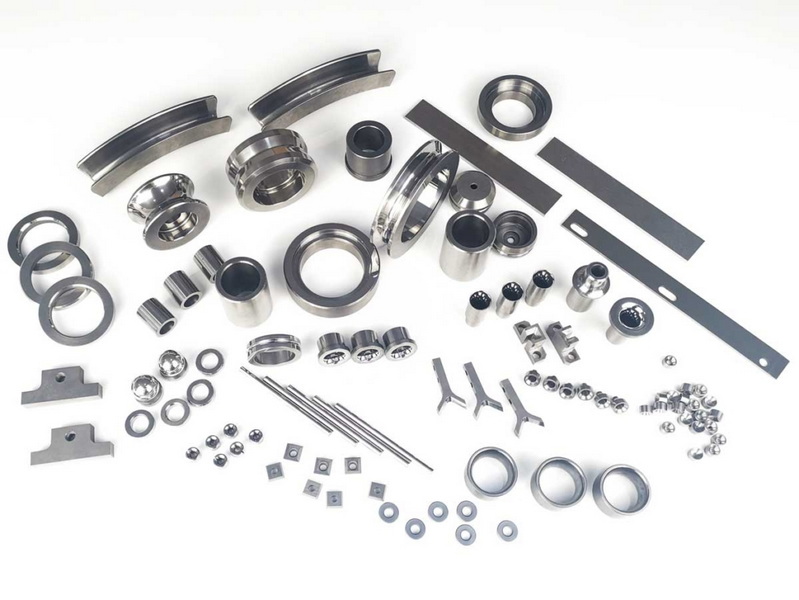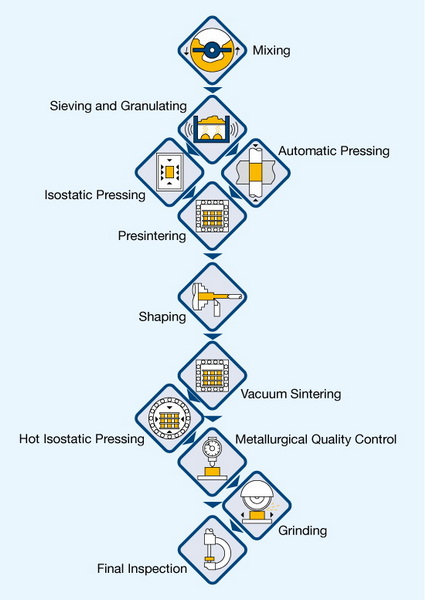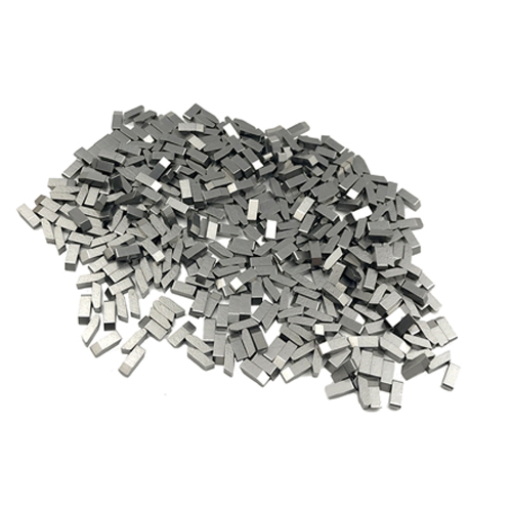Content Menu
● Introduction to Tungsten Carbide Coatings
>> Characteristics of Tungsten Carbide Coatings
● Applications of Tungsten Carbide Coatings
>> Industrial Challenges and Solutions
● How to Apply Tungsten Carbide Coatings
>> Step 1: Surface Preparation
>> Step 2: Coating Process Selection
>> Step 3: Coating Application
>> Step 4: Post-Coating Treatment
● Benefits of Tungsten Carbide Coatings
● Advanced Techniques and Innovations
>> Environmental Considerations
● Case Studies and Success Stories
● Conclusion
● Frequently Asked Questions
>> 1. What is the primary method for applying tungsten carbide coatings?
>> 2. What are the key benefits of using tungsten carbide coatings?
>> 3. How do tungsten carbide coatings enhance component durability?
>> 4. What industries commonly use tungsten carbide coatings?
>> 5. Can tungsten carbide coatings be customized for specific applications?
● Citations:
Tungsten carbide coatings are renowned for their exceptional hardness and wear resistance, making them a crucial component in enhancing the durability and performance of industrial machinery and equipment. These coatings are widely used across various industries, including aerospace, power generation, metal production, and paper mills, due to their ability to withstand harsh operational conditions and provide long-term protection against abrasion and corrosion.

Introduction to Tungsten Carbide Coatings
Tungsten carbide is a chemical compound consisting of equal parts tungsten and carbon atoms, known for its high Mohs hardness level. When applied as a coating, it offers superior protection against wear, abrasion, galling, fretting, erosion, and corrosion. The process of applying tungsten carbide coatings typically involves thermal spray techniques, such as High-Velocity Oxygen Fuel (HVOF) and Detonation Gun (D-Gun), which ensure a strong bond with minimal porosity.
Characteristics of Tungsten Carbide Coatings
- High Hardness: Tungsten carbide coatings have a hardness that exceeds Rc70, making them ideal for components exposed to high wear environments.
- Corrosion Resistance: When combined with metals like cobalt or nickel, these coatings offer enhanced corrosion resistance.
- High Bond Strength: The coatings adhere strongly to various materials, ensuring durability and longevity.
- Low Porosity: Techniques like HVOF provide coatings with less than 1% porosity, enhancing their protective properties.
Applications of Tungsten Carbide Coatings
Tungsten carbide coatings are versatile and are applied in numerous industries:
- Aerospace: Used in components like landing gear and turbine engines to enhance durability and performance.
- Power Generation: Protects against abrasion in turbine shafts and rotors.
- Metal Production: Enhances the durability of machinery used in metal processing.
- Paper Mills: Applied to roll surfaces to reduce wear and improve efficiency.
- Oil and Gas: Used in deep-sea drilling equipment for its high wear resistance.
Industrial Challenges and Solutions
In various industrial settings, components face challenges such as high wear, corrosion, and erosion. Tungsten carbide coatings provide a robust solution by extending the service life of components, reducing maintenance costs, and improving operational efficiency.
How to Apply Tungsten Carbide Coatings
The application of tungsten carbide coatings involves several steps and techniques:
Step 1: Surface Preparation
Before applying the coating, the substrate must be thoroughly cleaned and roughened to enhance adhesion. Techniques like shot blasting are commonly used to create a textured surface.
Step 2: Coating Process Selection
Several thermal spray processes are available, each with unique advantages:
- HVOF (High-Velocity Oxygen Fuel): Offers dense coatings with low porosity and high bond strength.
- D-Gun (Detonation Gun): Provides a powerful bond and is effective for thick coatings.
- Plasma Spraying: Suitable for complex shapes and internal surfaces.
- CVD (Chemical Vapor Deposition): Ideal for precise control over coating thickness and composition.
Step 3: Coating Application
The selected process is used to propel tungsten carbide particles onto the prepared substrate. The particles are typically mixed with a binder material like cobalt or nickel to enhance ductility and impact resistance.
Step 4: Post-Coating Treatment
After coating, the surface may require grinding or sealing to achieve the desired properties. Diamond abrasives are often used for precision grinding to ensure a smooth finish.

Benefits of Tungsten Carbide Coatings
The application of tungsten carbide coatings offers several benefits:
- Extended Service Life: Components last longer due to superior wear resistance.
- Improved Performance: Enhanced durability leads to more efficient operation and reduced downtime.
- Cost Savings: Reduced maintenance and replacement costs over time.
Advanced Techniques and Innovations
Recent advancements in coating technology have led to more efficient and precise methods for applying tungsten carbide coatings:
- Nanotechnology: Incorporating nanoparticles can enhance coating properties such as hardness and ductility.
- Robotics: Automated systems improve consistency and reduce labor costs in large-scale applications.
- Advanced Materials: New binder materials and composite coatings are being developed to tailor properties for specific applications.
Environmental Considerations
The application of tungsten carbide coatings also involves environmental considerations. Modern facilities are adopting cleaner processes and ensuring that waste materials are handled responsibly. Additionally, the extended lifespan of coated components reduces the need for frequent replacements, which can lower overall environmental impact.
Case Studies and Success Stories
Several industries have seen significant improvements through the use of tungsten carbide coatings:
- Aerospace Industry: A major aerospace manufacturer reported a 30% reduction in maintenance costs for turbine components coated with tungsten carbide.
- Paper Mills: A paper mill in the U.S. extended the lifespan of its rolls by 50% after applying tungsten carbide coatings, resulting in substantial cost savings.
Conclusion
Tungsten carbide coatings are a valuable asset in various industries due to their exceptional hardness, wear resistance, and corrosion protection. By understanding the application processes and benefits, industries can optimize the performance and longevity of their equipment. Whether it's aerospace, power generation, or manufacturing, tungsten carbide coatings play a crucial role in enhancing component durability and operational efficiency.

Frequently Asked Questions
1. What is the primary method for applying tungsten carbide coatings?
Tungsten carbide coatings are primarily applied using thermal spray processes, with HVOF being the most common method due to its high bond strength and low porosity.
2. What are the key benefits of using tungsten carbide coatings?
The key benefits include extended service life, improved performance, and cost savings due to reduced maintenance and replacement needs.
3. How do tungsten carbide coatings enhance component durability?
These coatings enhance durability by providing superior wear resistance, corrosion protection, and high bond strength, ensuring components can withstand harsh operational conditions.
4. What industries commonly use tungsten carbide coatings?
Industries such as aerospace, power generation, metal production, and paper mills frequently use tungsten carbide coatings to protect and enhance components.
5. Can tungsten carbide coatings be customized for specific applications?
Yes, the properties of tungsten carbide coatings can be tailored by adjusting the binder material and application technique to meet specific requirements.
Citations:
[1] https://shop.machinemfg.com/tungsten-carbide-coating-comprehensive-guide/
[2] https://www.nbcbearings.com/tungsten-carbide-carbon-coating-in-ldb/
[3] https://www.asbindustries.com/coating-materials/carbide-coating-materials/tungsten-carbide-coatings
[4] https://blog.csdn.net/qq_34917728/article/details/125122327
[5] https://westernmachine.com/machine-shop-services/tungsten-carbide-coatings/
[6] https://www.istockphoto.com/photos/tungsten-carbide
[7] https://www.haydencorp.com/tungsten-carbide-coatings
[8] https://patents.google.com/patent/CN107245732A/zh
[9] https://patents.google.com/patent/US3049435A/en
[10] https://www.thermalspray.com/preparation-tips-for-tungsten-carbide-coatings/
[11] https://www.industrialplating.com/materials/tungsten-carbide-coatings
















